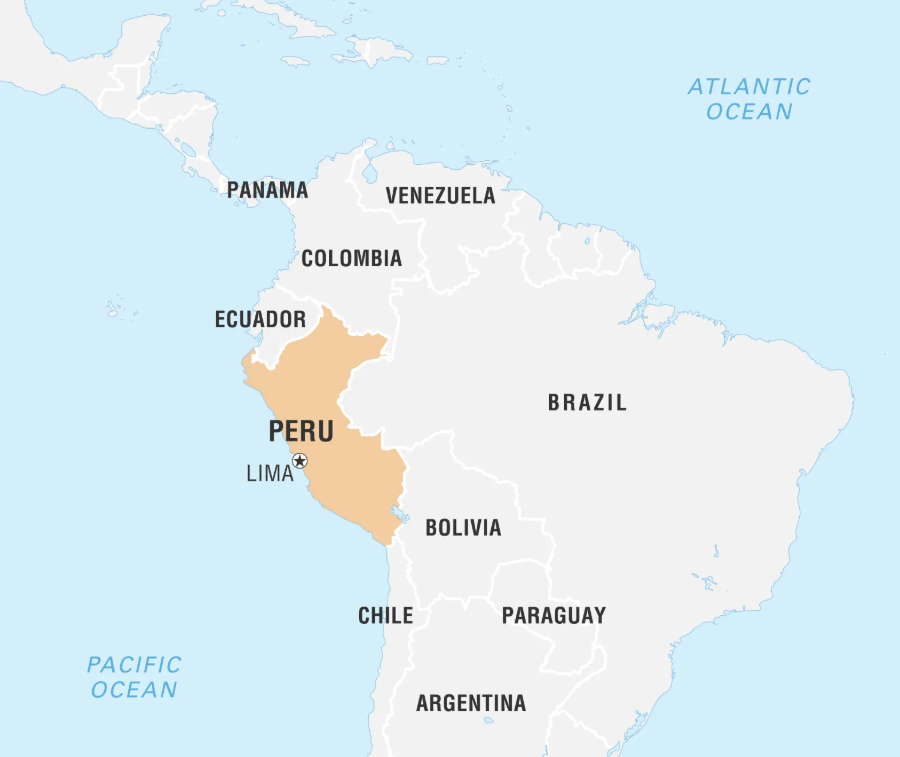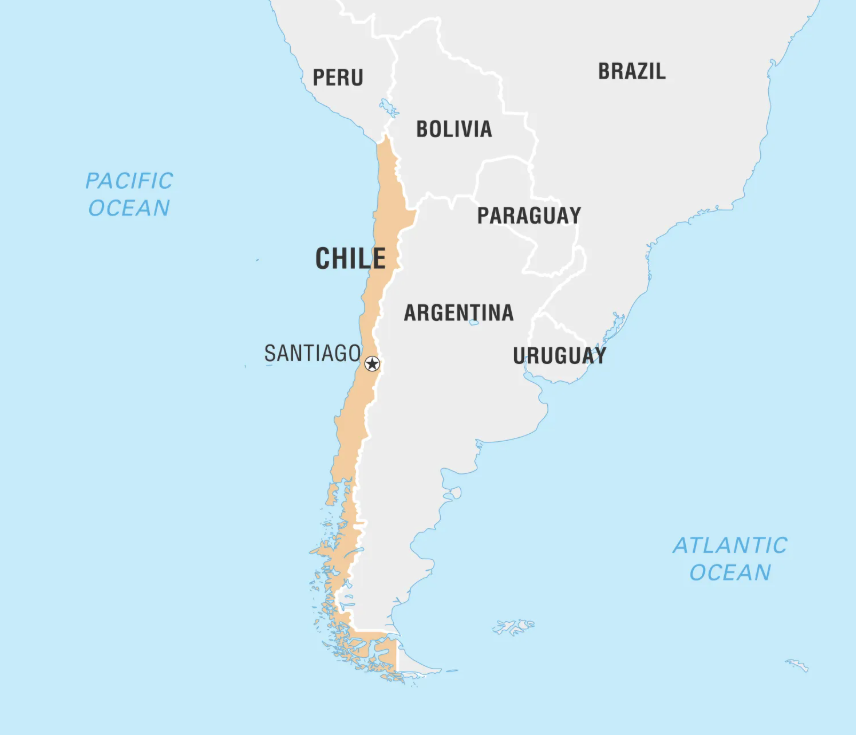International Relations
India-Latin America Trade Engagement
- 12 Nov 2025
- 13 min read
For Prelims: Latin America, Preferential Trade Agreement, Double Taxation Avoidance Agreement
For Mains: Importance of Latin America for India, India’s South-South cooperation
Why in News?
India has strengthened its Latin America trade engagement by completing the 9th round of trade talks with Peru and the 3rd round of Comprehensive Economic Partnership Agreement (CEPA) negotiations with Chile.
What are the Key Areas of Cooperation Between India and Peru?
- Economic & Trade Relations: Peru is India’s 3rd-largest trading partner in the Latin America–Caribbean (LAC) region, with bilateral trade rising from USD 66 million in 2003 to about USD 3.68 billion in 2023.
- India is a major importer of Peruvian gold and copper. The ongoing trade agreement is expected to deepen cooperation and unlock new opportunities across key sectors.
- 9th Round of India-Peru Trade Agreement negotiations covered critical topics such as Trade in Goods and Services, Rules of Origin, Technical Barriers to Trade and Critical Minerals, etc.
- Development Partnership: India has provided medical support during emergencies (COVID-19, Guillain-Barré outbreak 2023)
- India provides technical collaboration through initiatives like the India–Peru Centre for Excellence in IT (since 2015).
- India has extended financial assistance for disaster relief and cultural/educational initiatives.
Peru
- It is located in western South America, bordered by Ecuador and Colombia to the north, Brazil to the east, Bolivia to the southeast, and Chile to the south, with the Pacific Ocean along its western coast.
- Peruvian plant and animal life can be classified according to the three main physiographic regions: the Costa, the Sierra, and Amazonia.
- The world's largest rain forest, the Amazon, covers nearly half of Peru.
- The Andes Mountains, the second-highest mountain range in the world, run through Peru.
- Its highest peak is Mount Huascarán, and Lake Titicaca (shared with Bolivia) is the world’s highest navigable lake.
How are India-Chile Relations?
- Economic: Bilateral trade between India and Chile grew from USD 1.54 billion in 2020 to USD 3.84 billion in 2024.
- India’s key exports include motor vehicles, pharmaceuticals, iron and steel products, textiles, electrical machinery, and leather goods, while major imports from Chile are copper, pulp, fruits, and minerals.
- Trade: India and Chile’s Preferential Trade Agreement (PTA) has expanded market access and boosted trade diversification, while the Double Taxation Avoidance Agreement (DTAA) has strengthened investment confidence and improved ease of doing business.
- The partnership forms part of India’s broader “Act Latin America” policy, deepening South–South cooperation.
Chile
- Chile, located in South America, is a long, narrow nation bordered by Peru and Bolivia to the north, Argentina to the east, and the Pacific Ocean to the west and by the Drake Passage to the south.
- Geographically, the Andes Mountains pass through Chile (the world’s longest continental range), the Atacama Desert (the driest non-polar desert), and Ojos del Salado (the world’s highest active volcano) located on the Argentina–Chile border.
- Situated on the Pacific Ring of Fire, Chile frequently experiences earthquakes and tsunamis.
- Economically, it is the world’s largest copper producer and part of the “Lithium Triangle” with Argentina and Bolivia.
What is the Significance of India-Latin America Relations?
- Economic and Trade Diversification: India’s trade with Latin America reached USD 35.7 billion in 2023–24, with exports worth over USD 14 billion.
- Latin America helps diversify India’s trade and investment portfolio, reducing dependence on traditional partners like the US, EU, and China.
- Energy and Critical Minerals Security: Latin America is central to India’s energy diversification, supplying 15–20% of India’s crude oil from Brazil, Mexico, and Venezuela.
- The Lithium Triangle (Chile, Argentina, and Bolivia) holds over 75% of global lithium reserves, vital for India’s EV and clean energy sectors.
- India’s KABIL–CAMYEN agreement in Argentina marks the country’s first overseas lithium exploration project, ensuring access to key minerals.
- Food and Agricultural Security: The region has become a reliable supplier of food commodities, including edible oils, pulses, and grains.
- Argentina and Brazil are major exporters of soybean oil to India, helping maintain price stability and food security.
- India’s edible oil imports from Latin America rose to USD 5.6 billion in 2022, showing its growing dependence on the region’s agri-exports.
- Geopolitical and Strategic Alignment: Collaboration in multilateral platforms such as G20, BRICS, and IBSA enhances India’s global leadership.
- Both regions advocate for a multipolar world and Active Non-Alignment, often coordinating positions on global issues like climate change and global governance reform.
- Engagement helps India counter China’s growing presence in the LAC region, which currently dominates trade and infrastructure investments.
- Climate Cooperation and Sustainable Development: Both regions share commitments to renewable energy, biodiversity conservation, and green transition.
- India extended a USD 140 million Line of Credit to CARICOM for solar and climate resilience projects.
- Latin America participation in the International Solar Alliance (ISA) strengthens leadership in climate diplomacy.
What are the Major Challenges in India–Latin America Relations?
- Connectivity Constraints: The vast physical distance between India and Latin America leads to high transport costs and longer shipping times.
- The absence of efficient logistics and air freight corridors limits trade expansion and people-to-people mobility.
- Limited Engagement: India’s trade is concentrated in a few countries (Brazil, Mexico, Argentina, Chile), while smaller economies like Panama and Guatemala remain under-engaged.
- Competition from China: China dominates Latin American trade and investment, with its trade volume exceeding USD 400 billion, compared to India’s USD 35 billion.
- Beijing has secured large infrastructure and mining deals, including projects like the Central Bi-Oceanic Railway Corridor, which India has yet to match.
- China’s financial power and diplomatic presence in the region challenge India’s outreach efforts.
- Weak Regional Integration in Latin America: Regional organizations like MERCOSUR face internal divisions and slow decision-making.
- Some members (e.g., Brazil, Uruguay) pursue independent trade deals, diluting regional cohesion.
- This complicates India’s effort to engage Latin America through a single unified economic platform.
- Limited Multilateral and Institutional Engagement: India’s engagement in regional bodies like Community of Latin American and Caribbean States (CELAC) and the Pacific Alliance has been occasional.
- Lack of consistent participation in multilateral dialogues prevents India from influencing regional policy frameworks.
What Steps Can Strengthen India–Latin America Relations?
- Enhance Connectivity and Logistics: Develop logistics hubs and port partnerships to facilitate smoother trade and cargo movement.
- Explore a dedicated India– Latin America and the Caribbean (LAC) maritime corridor or air freight route to improve supply chain efficiency.
- Strengthen Political and Diplomatic Engagement: Set up an “India–LAC Dialogue Mechanism” within the Ministry of External Affairs for coordinated engagement.
- Increase India’s participation in regional organizations like CELAC, CARICOM, and the Pacific Alliance.
- Deepen Economic and Trade Integration: Expand PTAs into comprehensive Free Trade Agreements (FTAs) with MERCOSUR and other regional blocs.
- Simplify tariff structures and regulatory procedures to make trade more accessible.
- Boost Technological Collaboration: Establish India–LAC Innovation Hubs for start-ups and MSMEs focused on sustainable technology.
- Promote research and technology transfers in agriculture, climate resilience, and clean energy.
- Build cooperation under South–South frameworks for knowledge exchange and low-cost technology sharing.
- Engage the Indian Diaspora and Private Sector: Empower the Indian diaspora in Latin America, especially in Guyana, Trinidad and Tobago, and Suriname, to serve as cultural and economic bridges.
Conclusion
Latin America is a vital strategic, economic, and environmental partner for India, supporting its energy, food, and mineral security while aligning with India’s goal of a multipolar and sustainable global order. Stronger India–LAC ties are key to advancing long-term global and South–South cooperation.
|
Drishti Mains Question: Assess India’s trade and investment performance in Latin America and suggest sector-specific measures to increase bilateral flows and technology cooperation. |
Frequently Asked Questions (FAQs)
1. Which Latin American countries form the “Lithium Triangle”?
Chile, Argentina, and Bolivia together form the Lithium Triangle, holding over 75% of global lithium reserves.
2. Which Latin American countries supply most of India’s crude oil imports from the region?
Brazil, Mexico, and Venezuela supply about 15–20% of India’s crude oil imports from Latin America.
3. What is MERCOSUR?
MERCOSUR (Southern Common Market) is a Latin American trade bloc. Its headquarters is in Montevideo, Uruguay.
UPSC Civil Services Examination Previous Year Question (PYQ)
Prelims
Q. In which one of the following groups are all the four countries members of G20? (2020)
(a) Argentina, Mexico, South Africa and Turkey
(b) Australia, Canada, Malaysia and New Zealand
(c) Brazil, Iran, Saudi Arabia and Vietnam
(d) Indonesia, Japan, Singapore and South Korea
Ans: (a)








